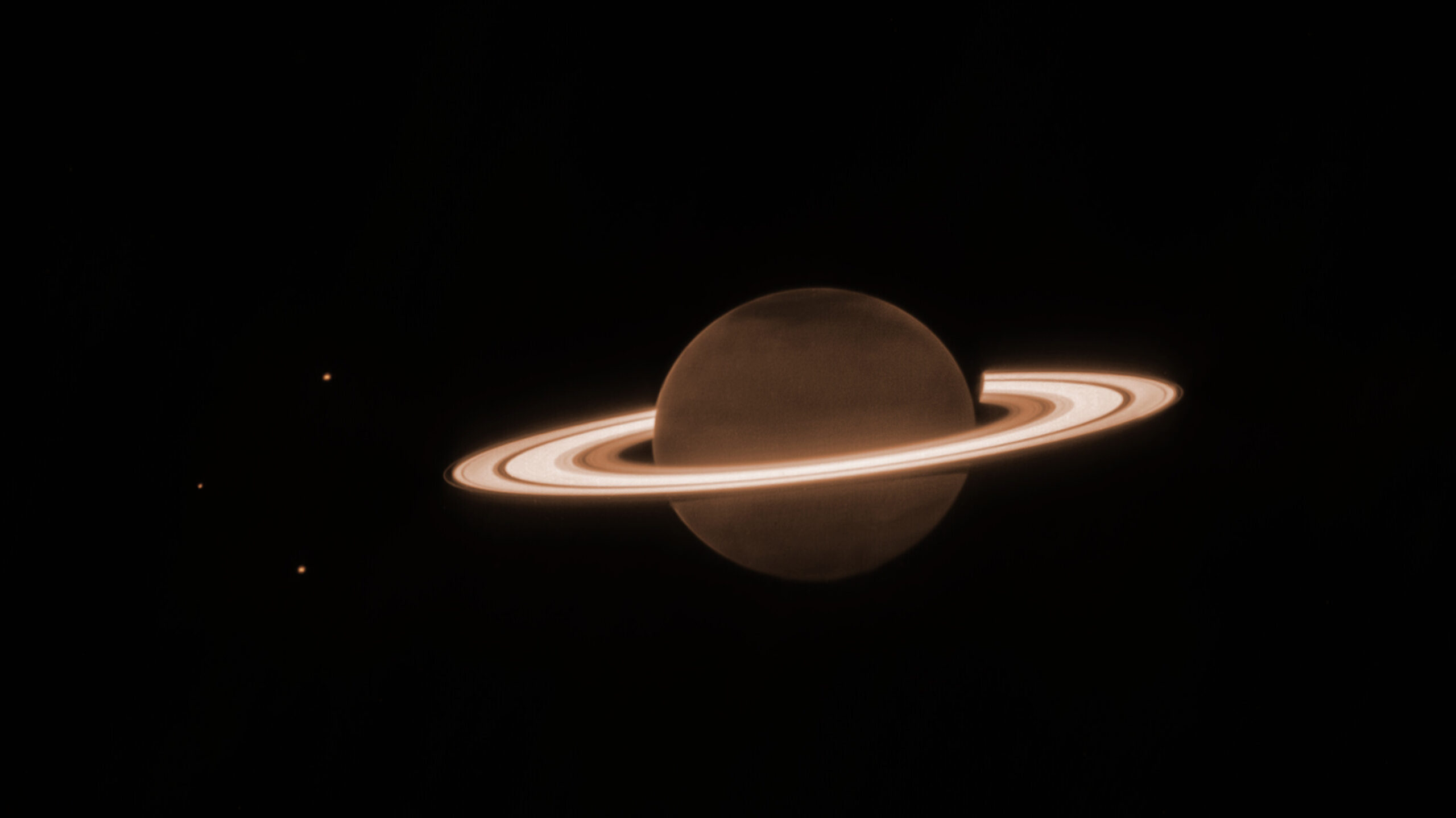Report by Alekhya Chavan
The James Webb Space Telescope turned towards Saturn, capturing the planet’s first thermal observations. Thermal observations involve detecting/measuring heat and energy thus identifying objects.
The image shows the details of the rings surrounding Saturn, with moons like Dione, Enceladus, and Tethys.
In the thermal wavelength (the specific length of radiations released by heat.), Saturn’s atmosphere absorbs enough sunlight, resulting in its dark appearance.
The image helps researchers to examine the composition and structure of Saturn’s ring system (rings that surround the planet Saturn) more closely than before.

Saturn’s rings are made up of many different types of rocks and ice. They are of different shapes and sizes, from tiny grains of sand to huge pieces as big as mountains. Apart from looking at Saturn, the James Webb Space Telescope also focused on Enceladus, one of Saturn’s moons further leading to the above discovery.
James Webb Space Telescope’s pictures of Saturn show its dark atmosphere contrary to its bright rings, creating a different image.
Images were released by NASA and ESA. Featured Image: ESA.

